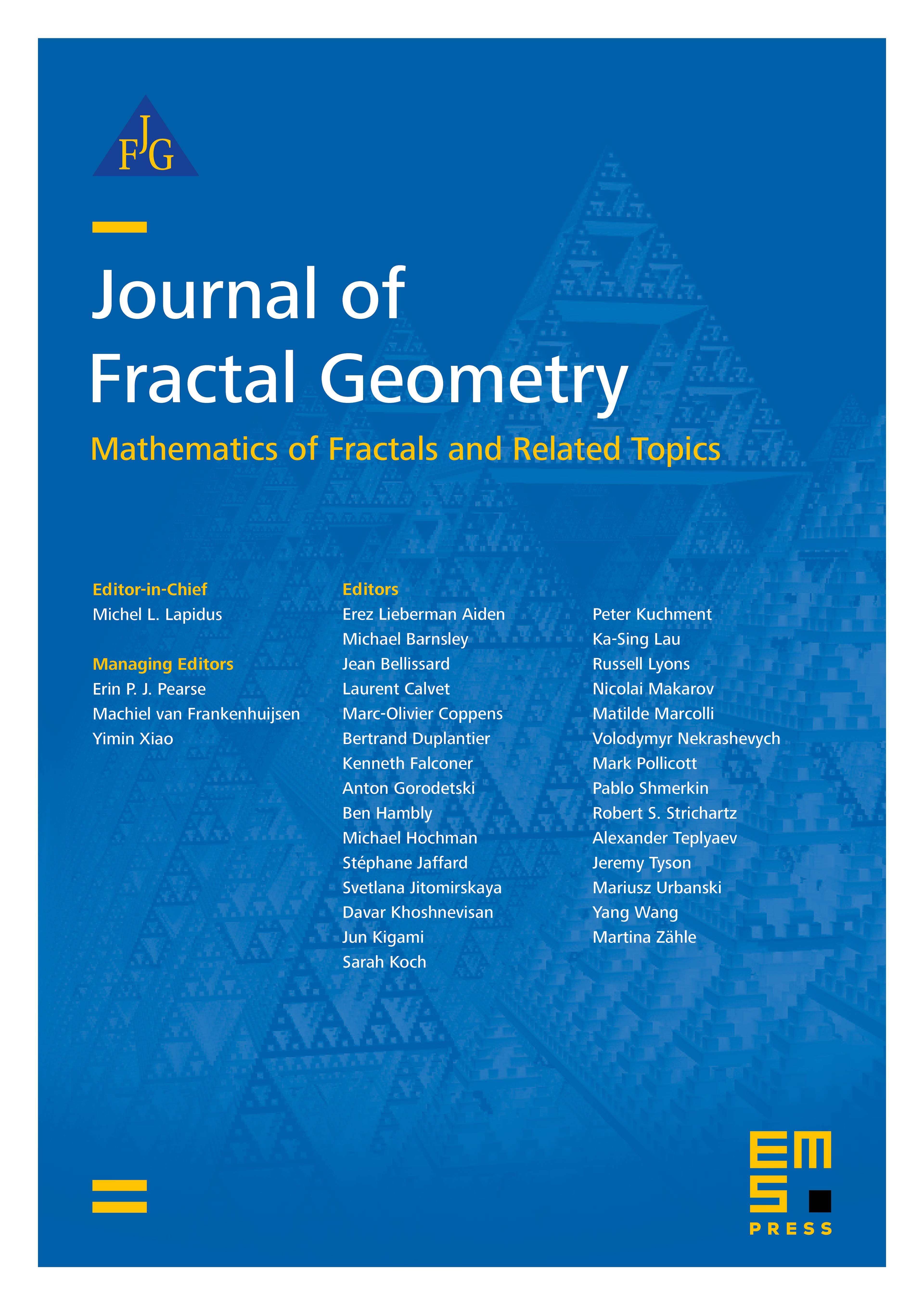Intersections of multiplicative translates of 3-adic Cantor sets
William C. Abram
Hillsdale College, USAJeffrey C. Lagarias
University of Michigan, Ann Arbor, USA

Abstract
This paper is motivated by questions concerning the discrete dynamical system on the -adic integers given by multiplication by . The exceptional set is defined to be the set of all elements of whose forward orbits under this action intersect the -adic Cantor set (of -adic integers whose expansions omit the digit ) infinitely many times. It has been shown that this set has Hausdorff dimension at most , and it is conjectured that it has Hausdorff dimension . Upper bounds on its Hausdorff dimension can be obtained with sufficient knowledge of Hausdorff dimensions of intersections of multiplicative translates of Cantor sets by powers of . This paper studies more generally the structure of finite intersections of general multiplicative translates by integers . These sets are describable as sets of -adic integers whose -adic expansions have one-sided symbolic dynamics given by a finite automaton. This paper gives a method to determine the automaton for given data and to compute the Hausdorff dimension, which is always of the form where is an algebraic integer. Computational examples indicate that in general the Hausdorff dimension of such sets depends in a very complicated way on the integers . Exact answers are obtained for certain infinite families, which show as a corollary that a relaxed notion of generalized exceptional set has a positive Hausdorff dimension.
Cite this article
William C. Abram, Jeffrey C. Lagarias, Intersections of multiplicative translates of 3-adic Cantor sets. J. Fractal Geom. 1 (2014), no. 4, pp. 349–390
DOI 10.4171/JFG/11